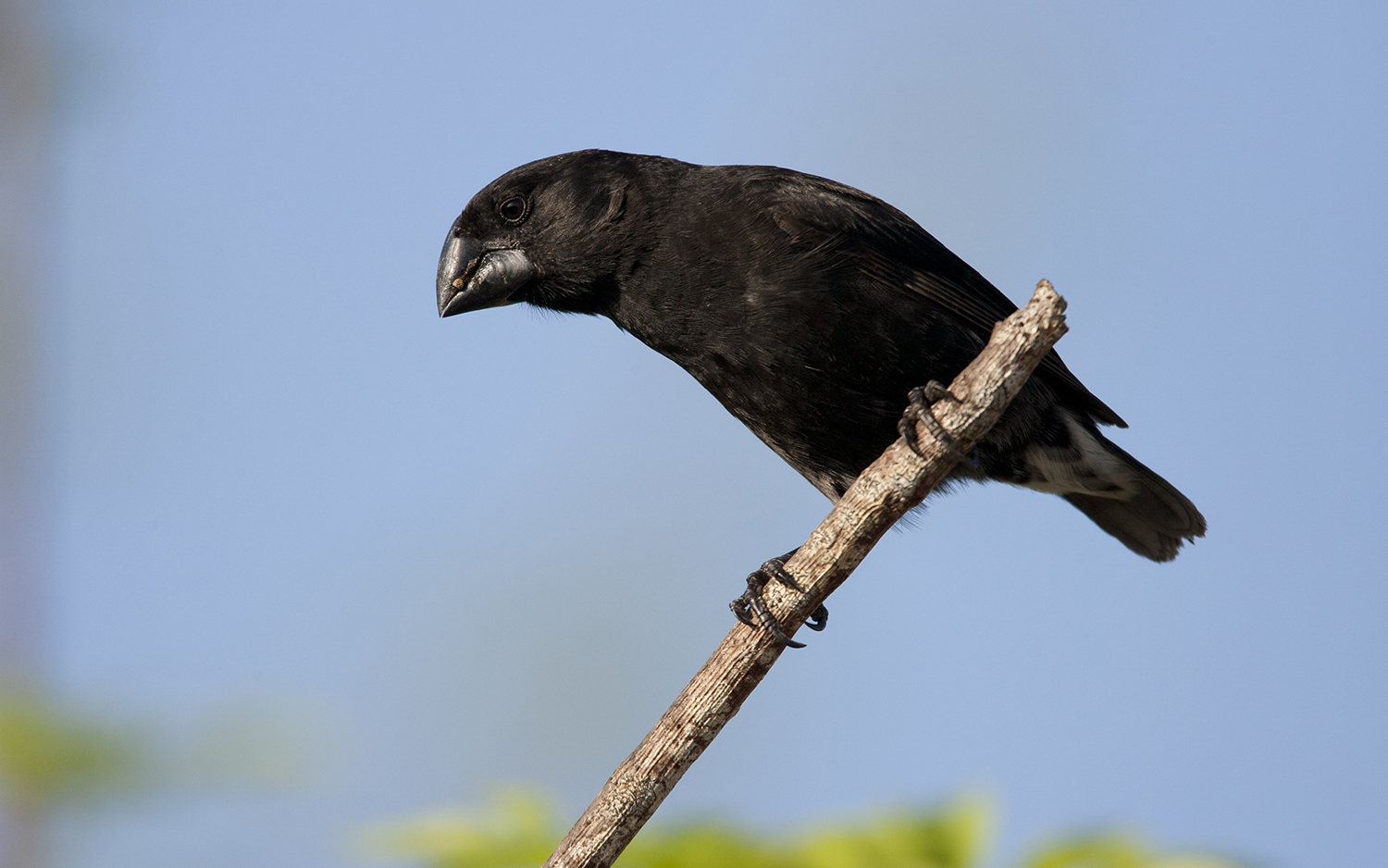Finch's Bite Is 320 Times More Powerful Than T. Rex's

The mighty Tyrannosaurus rex's bite was far less impressive for its body size than the bite of a much smaller modern dinosaur — a tiny Galapagos finch.
Researchers recently crunched the numbers to evaluate crunching strength in the bites of hundreds of animals — living and extinct. They used supercomputers to evaluate bite force and body mass, and to track evolutionary changes in jaw power in animal groups that included mammals, reptiles and birds.
When the calculations were done, the scientists found that finches — living dinosaurs, as are all birds — packed a bite that was unexpectedly powerful for such a small creature. In fact, if a finch were scaled up to T. rex-size, the bird's bite would then be 320 times stronger than that of its extinct cousin, the scientists reported. [Image Gallery: The Life of T. Rex]
These new findings don't suggest that T. rex didn't have a devastating bite. Rather, they indicate that the force of a T. rex bite is unsurprising when evaluated in light of the animal's body mass and the bite strength of its ancestors, according to the study.
Bite force is measured in Newtons, with 1 newton (N) representing the amount of force that can accelerate an object weighing 1 kilogram to a speed of 1 meter per second. T. rex weighed about 8 tons, and had a bite force of 57,000 newtons, which sounds pretty impressive.
By comparison, a finch's bite force is only 70 newtons, but its body mass is just about 1 ounce (33 grams).
For T. rex — and most of the other species that the researchers examined — bite force came about through gradual evolution over time and drew its strength from the animal's mass, so bigger animals would be expected to have strong bites, lead study author Manabu Sakamoto, a biological scientist at the University of Reading in the U.K., told Live Science in an email.
Sign up for the Live Science daily newsletter now
Get the world’s most fascinating discoveries delivered straight to your inbox.
But there were exceptions, the scientists discovered. In some species, such as the finch, bite force "was not as expected from their body sizes," Sakamoto said. This hinted that in Galapagos finches, evolution "sped up" to increase their bite strength out of proportion to their mass, since the bite strength of their finch ancestors about 1 million years ago was much weaker relative to body mass, according to the study.
In other words, "the finches bite harder relative to expectations than a tyrannosaur," Michael Habib, an assistant professor of integrative anatomical sciences with the Keck School of Medicine at the University of Southern California, told Live Science in an email.
Habib, who was not involved in the study, explained that bite-strength expectations are typically scaled for size, "so Galapagos finches are quite mighty for a small animal, while Tyrannosaurus rex was more or less as powerful as one would expect such a big animal to be, when it comes to bite force," he said.
However, even with an "average" bite, T. rex had no trouble taking down its prey, as large predators can usually generate sufficient bite force "just by being large," the researchers wrote.
"Tyrannosaurus rex was most likely capable of ‘pulverizing’ bones simply owing to its colossal size," the researchers reported.
The findings were published online Jan. 9 in the journal Proceedings of the Royal Society B: Biological Sciences.
- Facts about T. Rex, King of the Dinosaurs
- Dinosaur Profile: Tyrannosaurus Rex (Infographic)
- Photos: The Near-Complete Wankel T. Rex
Original article on Live Science.

Mindy Weisberger is an editor at Scholastic and a former Live Science channel editor and senior writer. She has reported on general science, covering climate change, paleontology, biology and space. Mindy studied film at Columbia University; prior to Live Science she produced, wrote and directed media for the American Museum of Natural History in New York City. Her videos about dinosaurs, astrophysics, biodiversity and evolution appear in museums and science centers worldwide, earning awards such as the CINE Golden Eagle and the Communicator Award of Excellence. Her writing has also appeared in Scientific American, The Washington Post and How It Works Magazine. Her book "Rise of the Zombie Bugs: The Surprising Science of Parasitic Mind Control" will be published in spring 2025 by Johns Hopkins University Press.










